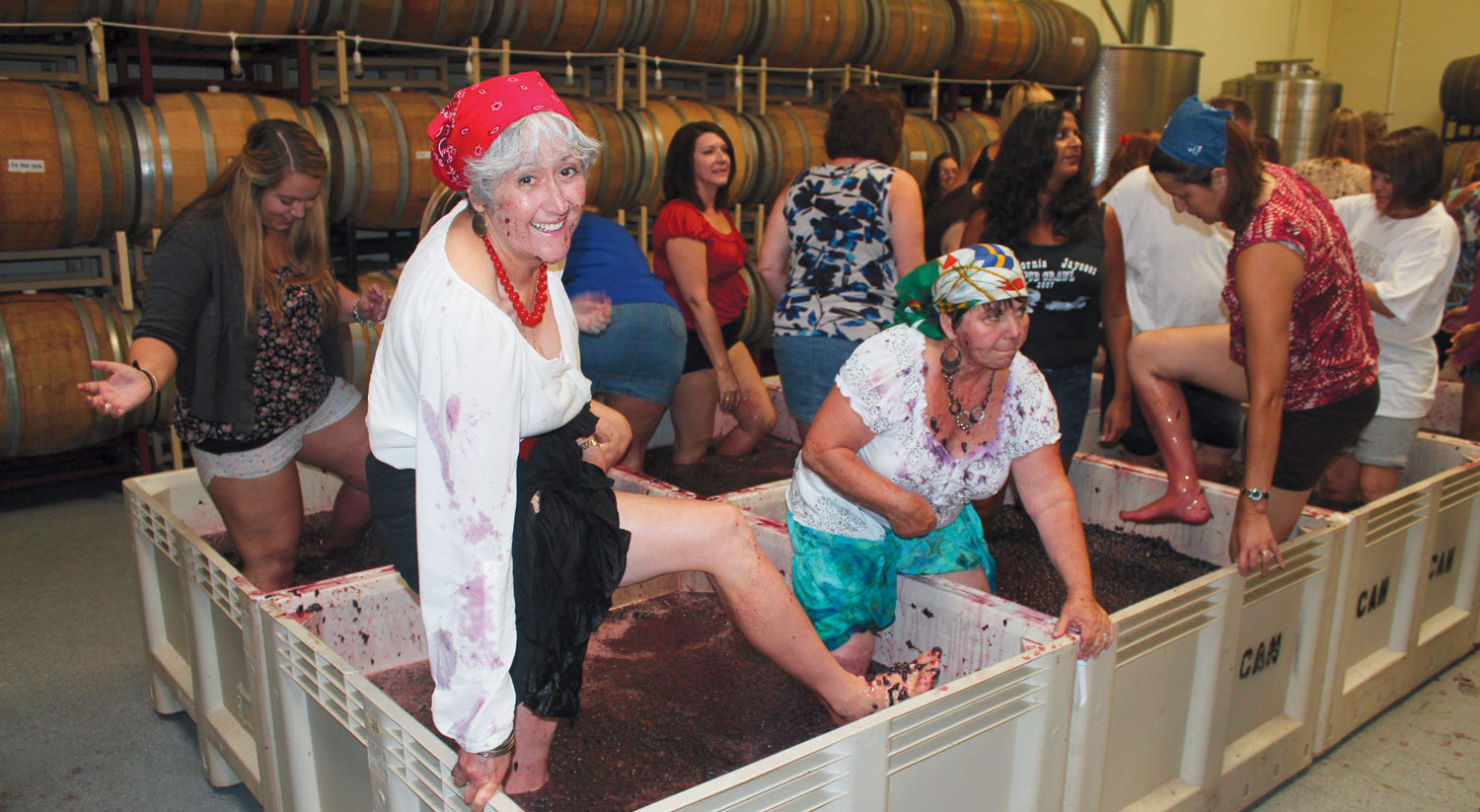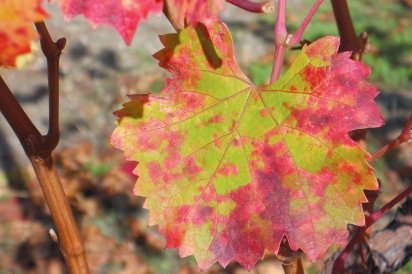Fall's Grape Harvest Turns Visitors Into Apprentice Winemakers for a Day
Love at First Crush
Autumn is an exciting time for wineries and absolutely my favorite time to visit and tour. Chardonnay leaves show off vivid yellows and Pinot Noir brilliant reds – our version of fall colors. It's also when the fruit is harvested.
From September through November, winemakers are at their busiest. Machines that sat idle for a year work around the clock to turn just-picked grapes into wine's first liquid step.
This is "the crush."
"People think that winemaking happens every day and don't realize that most wine making is done in a short period of time," says Chris Brown, owner of Cantara Cellars in Camarillo.
The crush is a frenzied time when winemakers' artistry informs their decisions ranging from when to harvest – because it determines how much the winemaker will have to manipulate the wine during fermentation – to which yeast to use. Winemakers I know test several yeast varieties before picking the one that will impart the desired flavors to the wine.
Amid the busyness, though, many wineries enjoy teaching and showing visitors the process as the winery is in full production. It gives enthusiasts a peek into the hard work and passion that goes into each bottle.
Everything begins in the vineyard, when winegrowers turn their yearlong nurturing of crops into cash. Harvesting at precisely the right time is key; this is most often based on the experience of the winemaker and vineyard manager. Part of the process is examining the fruit on the vine, and tasting and testing it.
White grape varieties like Sauvignon Blanc and Chardonnay ripen first, so they are the first to press, followed by the thinner-skinned and early-ripening reds like Pinot Noir and Tempranillo. Thick-skinned grape varietals like Cabernet, Syrah and Zinfandel usually are harvested last.
Color transfer from the grape skins and brown pips (seeds) inside the fleshy pulp are clues to ripeness.
The final decision of when to harvest usually is based on science and weather conditions. Measuring the sugar content (brix) and acid (pH) gives the winemaker an indication of the final alcohol and balance of the wine. Weather conditions like an expected rain or a heat wave can severely affect the crop and might push up a harvest.
Driving through wine country in the wee morning hours (when acid is at its highest) you might see the glowing headlights of vineyard workers selecting the best fruit from the vines, leaving behind any inferior fruit.
"When the grapes arrive at the winery in the early morning, we have only a short time to press the fruit before it spoils or starts fermenting," says Brown, who sources grapes from Lodi.
Once at the winery, the mounds of grapes are sorted, de-stemmed and lightly crushed before going into the press – today's answer to grape stomping.
I love watching the presses, seeing magenta juice from Syrah grapes drip into the trough below and then being pumped into the fermentation tank. The slightly yeasty smell of fermentation is unmistakable.
Winery guests may get to "punch down" the liquid, breaking the cap of red grape skins that float to the top as the result of carbon dioxide generated from the yeast. Mixing the cap back into the liquid extracts color from the skins and prevents oxidization. (Punching down must be done three to four times a day for each bin of fermenting wine.)
After fermentation, the wine goes into barrels for aging, and the crush is complete.
I encourage all wine enthusiasts to participate in a crush event. It's not only a time when people in the industry share their craft; it's a time of parties, special dinners with past vintages and barrel samples. Plus you'll learn about winemaking – and have fun doing it.






